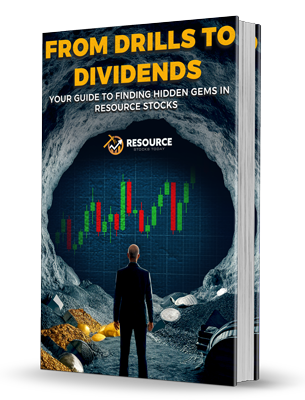As the buzz around artificial intelligence companies continues to captivate investors, the steady rally in gold bullion this year has gone relatively unnoticed. Even more under the radar is the surge in mining stocks, which, despite impressive gains, have been largely overlooked by fund investors.
While the massive $69.1 billion SPDR Gold Shares ETF (GLD) — a leading exchange-traded fund (ETF) for bullion — is up 21% this year, the $14.7 billion VanEck Gold Miners ETF (GDX) has posted a notable 26% increase. Despite this outperformance, funds in Morningstar’s Equity Precious Metals category have experienced $1.7 billion in outflows, with the VanEck ETF alone losing $1.3 billion. Meanwhile, SPDR Gold Shares, classified under Morningstar’s Commodities Focused category, has seen $1.8 billion in outflows.
A key reason for the muted interest in miner stocks, beyond the preference for AI plays, could be the disappointing performance of mining funds over the past two years. In 2022, as the bear market took hold, miner stocks fell harder than gold itself, with the SPDR bullion ETF declining by just 0.8% compared to the VanEck miner ETF’s 8.8% drop. In 2023, when the bull market returned, mining stocks again lagged bullion, gaining 10.2% versus bullion’s 13.3% increase.
This deviation from historical patterns is unusual. Typically, mining stocks act as a leveraged play on gold prices, amplifying movements in bullion due to their operating leverage. In theory, miners should have significantly outperformed bullion in 2023. The surprising underperformance stems from an ironic cause: the very inflation gold is supposed to hedge against.
Operating costs for gold miners, such as wages, surged in 2022 and 2023, eating into profit margins. However, recent signs indicate that cost inflation is easing. Thomas Kertsos, manager of the top-performing First Eagle Gold Fund (SGGDX), notes that inflation rates for miners’ capital expenditures (capex) have moderated from double digits last year to single digits this year. “Most companies have said that their cost inflation is going down across the board,” Kertsos observes. This slowdown is encouraging news for investors who had been wary of rising costs.
For conservative gold investors, First Eagle Gold offers a balanced approach, holding both miners and less volatile bullion. Typically, the fund caps its exposure to gold bullion at 25%, but due to attractive valuations in the mining sector, Kertsos has favored miners over bullion this year. “Our bullion weighting was only 5% or 6% at the beginning of the year,” Kertsos mentions — the lowest in a decade. After the recent rally, bullion now comprises 15% of the fund, yet Kertsos still sees “a lot of opportunities in gold miner stocks.”
First Eagle’s portfolio is led by Wheaton Precious Metals, a mining royalty company known for its conservative approach and low-cost production, particularly from its Salobo mine in Brazil. Newer holdings, not yet disclosed by Kertsos, include both riskier smaller players like Canada’s G Mining Ventures and more established miners like Kinross Gold.
More aggressive investors may want to consider the VanEck Gold Miners ETF or its actively managed sibling, the VanEck International Investors Gold Fund (INIYX). While the VanEck ETF and the iShares MSCI Global Gold Miners ETF (RING) provide broad exposure to mining stocks, the active management approach can offer an edge. Poor management has historically plagued some smaller miners, making a selective strategy more attractive. The VanEck Junior Gold Miners ETF (GDXJ), for instance, has underperformed its peers due to weaker performance from “junior” miners.
Imaru Casanova, manager of the VanEck International Investors Gold Fund, is a strong proponent of active management in the sector. Her fund has increased its allocation to junior miners from 21% at the start of 2024 to 28% by July 31, aiming to add more “torque” in a bull market. However, these smaller miners have yet to deliver the expected outperformance. “The developers haven’t given us the leverage we would expect,” Casanova remarks. “These names should be on fire.”
One of Casanova’s key positions, G Mining Ventures, now makes up 4% of her fund, largely due to a recent acquisition that increased its market capitalization. Other new positions include Artemis Gold and Calibre Mining, both based in Canada. Casanova explains her strategic pivot: “We had been avoiding Calibre because of its production in Nicaragua, which was too risky for us. But their acquisition of Marathon Gold in Canada de-risked the company.”
The OCM Gold Fund (OCMAX) presents another viable option for investors. Managed by Gregory Orrell, with four decades of experience, the fund is positioned to capitalize on a broad recovery in the mining sector. Orrell views the current lag in junior miner performance as part of a normal cycle, saying, “The popcorn kernels go off at different temperatures.” He expects smaller players to catch up as the gold price cycle matures.
For investors willing to navigate this underappreciated sector, the potential rewards could be significant if the anticipated rebound in junior miners materializes.
Key Takeaways:
- Mining stocks have outperformed gold bullion this year, yet investor interest remains subdued.
- Rising operating costs and inflationary pressures have dampened mining stock performance, but cost inflation is easing.
- Actively managed funds offer a strategic edge in navigating the diverse and complex mining sector.
- Conservative and aggressive investors have options tailored to their risk appetites, from the balanced First Eagle Gold Fund to the more dynamic VanEck International Investors Gold Fund.
- A rebound in junior miners could provide substantial gains for those willing to take on higher risk.















